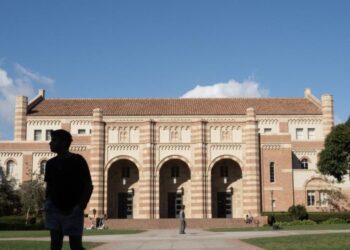Guantánamo’s only prisoner serving a life sentence returned to the war court on Thursday, 17 years after he was convicted of producing recruiting videos for Al Qaeda, and put on a show of defiance as he did at his 2008 war crimes trial.
The prisoner, Ali Hamza al-Bahlul, 56, firmly but politely refused to sit in the witness stand, refused to swear an oath to tell the truth and refused help from a defense lawyer.
Instead, from the same seat he took years ago at his arraignment, he launched into monologues in Arabic celebrating Al Qaeda, occasionally challenging court translators, and said he had intentionally misinformed U.S. interrogators in the years following his capture in Pakistan in 2001.
“One of the interrogators put a gun to my head and did not see any reaction from me,” he said. Another interrogator swatted it away.
At issue in this week’s proceeding was whether prosecutors could use what Mr. Bahlul told F.B.I. interrogators early in his detention at the upcoming capital trial of another prisoner, Abd al-Rahim al-Nashiri, who is accused of plotting the Al Qaeda bombing of the U.S. Navy destroyer Cole on Oct. 12, 2000.
Lawyers for Mr. Nashiri, who was not in court on Thursday, want the information excluded as hearsay and considered tainted by torture.
Mr. Bahlul is just one of two convicts among the 15 prisoners held at Guantánamo Bay; efforts to hold the death penalty tribunals of Mr. Nashiri and the men accused of conspiring in the Sept. 11, 2001, attacks have been stymied by the torture of the defendants and potential witnesses.
Mr. Bahlul called the United States “the mother of terrorism,” and displayed a keen understanding of current events, at one point expressing approval of Defense Secretary Pete Hegseth’s adopting the title secretary of war. He called it “the definitive and right description of the aggression of the United States.”
A military jury convicted Mr. Bahlul, who is Yemeni, on Nov. 3, 2008, after he refused to offer a defense at his military commission trial, and refused to permit his assigned Air Force lawyer to speak for him. He would sometimes wave a handmade sign proclaiming “Boycott” in Arabic.
Mr. Bahlul has spent years in solitary confinement, often refusing legal meetings, as higher courts have chipped away at his 2008 conviction for creating a recruiting video for Al Qaeda about the Cole bombing. He is Guantánamo’s longest-held prisoner, serving a life sentence on a single charge of conspiracy.
He looked and sounded similar to the time of his trial, although his beard has turned charcoal gray.
He appeared to not understand why he had come to court, and initially said he would take questions only from the judge, Col. Matthew Fitzgerald, who at one point cut him off midsentence after he said, somewhat randomly, “When I was subjected to torture. …”
In time, he engaged with the lead prosecutor, Capt. Timothy Stinson, but his testimony was mostly nonresponsive to questions. He was far more cooperative later in the day when a defense lawyer, Jessica Manuele, questioned him about any abuse he suffered in U.S. detention.
The judge has scheduled the trial for June 1, more than 25 years after Al Qaeda’s suicide bombing off Yemen, which killed 17 U.S. sailors. Mr. Nashiri has been in U.S. custody since 2002.
Mr. Bahlul, who was captured in 2001, has been at Guantánamo Bay since the day the prison opened on Jan. 11, 2002.
During nearly seven hours in court, Mr. Bahlul repeatedly said he had not had prior knowledge of Qaeda attacks, including on the U.S.S. Cole and on Sept. 11, 2001, because he was not privy to sensitive operational information as a media director for Osama bin Laden.
Near the end of his appearance, Mr. Bahlul suddenly posed a question.
“Is this a retrial, Your Honor?” he asked.
“It is not,” the judge replied.
A little later, he noted that there had been a nearly two-decade gap in his court appearances, and asked whether he would be invited to testify again in 2048, “if I am alive.”
The judge said he could not predict the future.
Carol Rosenberg reports on the wartime prison and court at Guantánamo Bay. She has been covering the topic since the first detainees were brought to the U.S. base in 2002.
The post Qaeda Convict Returns to Guantánamo Court 17 Years After Trial appeared first on New York Times.




